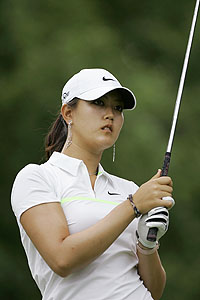"Seeking ace Editor with go-to attitude"
/Thanks to the reader who spotted this USGA want ad:
Company: United States Golf Association
Position: Seeking ace Editor with go-to attitude
Location: Far Hills, New Jersey
Job Status: Full-time
Salary: More than $100,000
Ad Expires: August 4, 2008
Job ID: 945089
Description:
Position Summary: Responsible for overseeing all aspects of publishing, editorial, design and production for the department.
Principal Duties: - Prepares editorial and production schedules and ensures that the flow of material proceeds as scheduled.
- Oversees writing, rewriting and editing of text and coordination of photography and illustrations and ensures desired level of quality is maintained.
- Oversees development of ideas and in planning of long-range content of projects.
- Proofreads, copy-edits.
- Editing responsibilities to include collaboration with New Media department as well as Media Relations. - Functions as reporter to cover internal activities including championships and other events and writes features.
That means you better be ready to get your nose browned!
- Prepares budget and oversees financial requirements.
- Supervise vendor in all production areas.
Working Relationships: - Other Communications Staff including New Media, Media Relations. - Contributing writers - Appropriate USGA staff members concerning information to be published/communicated - USGA Communications Committee
Knowledge, Education, Skills & Abilities: - Comprehensive knowledge of the game of golf, especially as it relates to USGA activities and mission. - Editorial project management. - Writing, editiing, proofreading & copy editing skills; understanding of photography. - Knowledge of production processes - Proficient computer skills which may include Photoshop, Quark, InCopy, InDesign, DxO Optics Pro and experience in the on-line environment.
TO APPLY: Please email letter of interest/cover letter and resume to HR@usga.org.

















